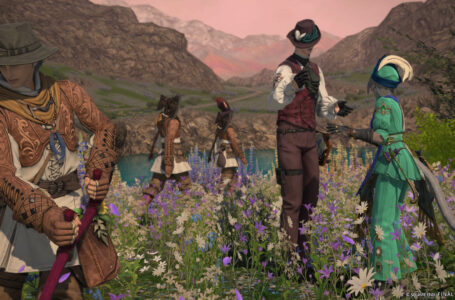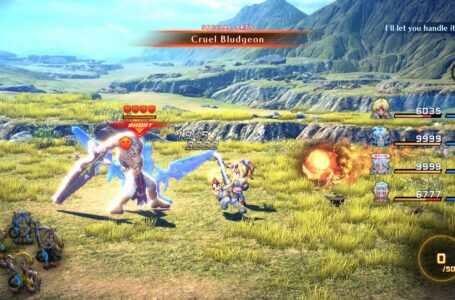Late to the party: Secret of Mana
Back in early November of 2022, I talked a bit about how I’d started playing Secret of Mana on the Switch, thanks to the excellent Collection of Mana release from Square Enix and M2. I’ve now beaten the game, so I figured it’s about time I revisit my thoughts and talk a little more about it — both in terms of the game itself, and the overall response to it over the years.
Firstly, I absolutely agree that this game should be considered an all-time classic. It’s definitely among some of Squaresoft’s finest 16-bit work — although having read up on the history of it a bit, it’s a bit of a shame that we’ll probably never see the original vision for what this game was going to be in English, even taking the recent 3D remake into account.
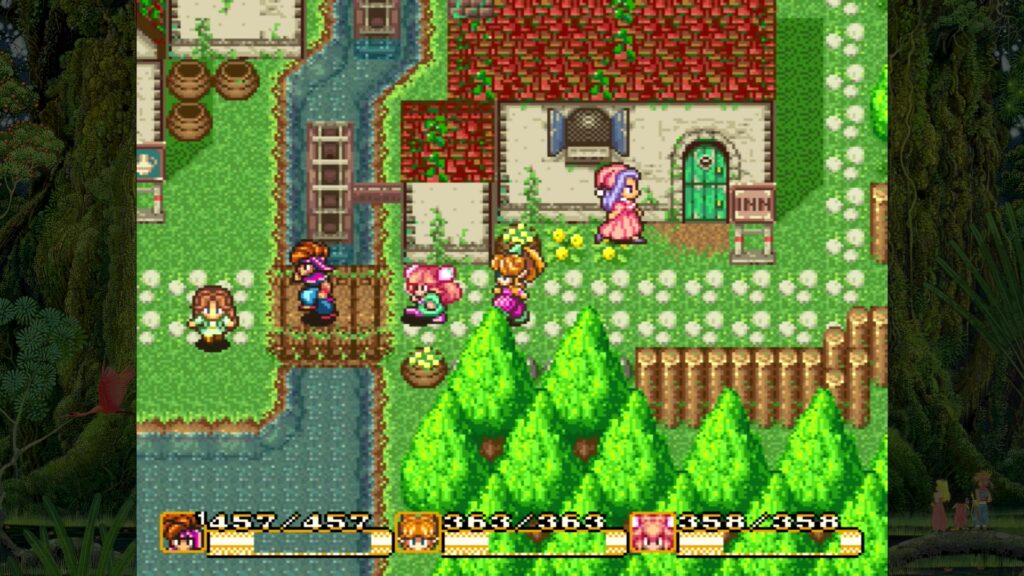
For the unfamiliar, Secret of Mana had a somewhat troubled history. Originally developed with the Super NES CD-ROM attachment in mind — yes, that same thing that would ultimately become the first Sony PlayStation — the team behind it ended up having to cut out a significant chunk of what was planned in order to fit it on a cartridge.
Some of the cut ideas ended up being incorporated into Chrono Trigger — indeed, at one point during development, Secret of Mana was actually known as Chrono Trigger — but there’s an estimated 40% of what was originally designed to be part of the game that ended up on the cutting room floor.
Not only that, but there’s the odd remnant of evidence that the game was originally designed for slightly more powerful hardware — the music, for example, often loses entire channels when sound effects are also happening. One suspects that the Super NES CD-ROM add-on, had it ever come to market, would have acted somewhat like the Mega CD in that it would add additional capabilities to the base system (such as additional sound generation hardware) as well as simply providing access to a medium with greater storage capacity.
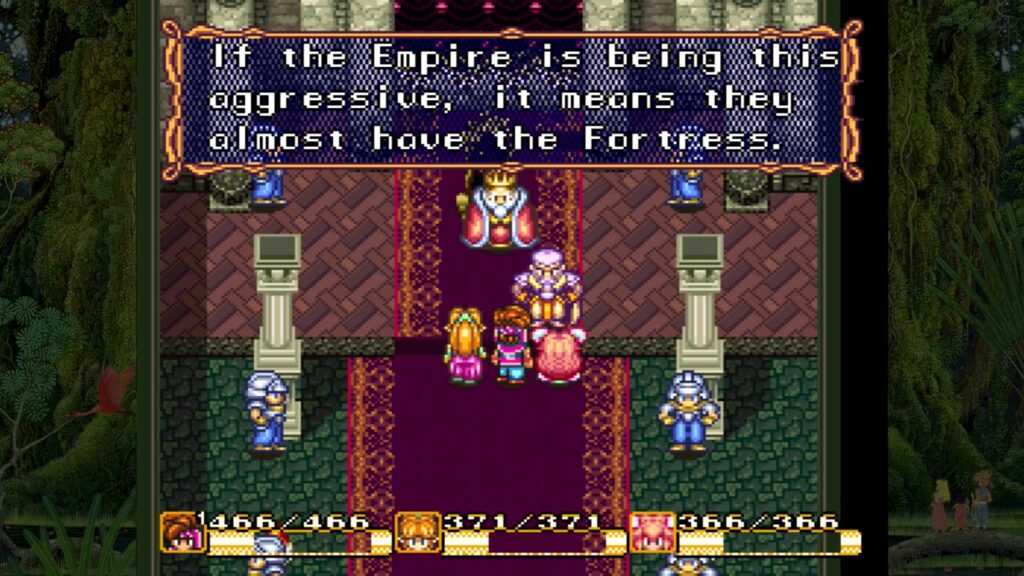
On top of all this, the localisation ran into significant issues. The use of a fixed-width font in the English release of the game, coupled with the way in which the text was formatted and stored in the cartridge, meant that a significant amount of what was present in the original Japanese script had to be excised for the English release. This wasn’t a case of content being cut because it was controversial; it simply wouldn’t fit in the overseas version!
In other words, the rather minimalistic style of storytelling that Secret of Mana is known for was primarily down to technical issues. This was also true for its predecessor Final Fantasy Adventure — though in that case, the developers were working under even tighter space constraints on the Game Boy, so both the Japanese and translated releases were a lot more similar to one another.
It’s testament to how good Secret of Mana is as a complete package that its fairly gutted translation still makes for a great gaming experience. Sure, we perhaps don’t get to know the main playable cast as well as we otherwise might have been able to, and maybe the overall story does feel largely like a series of disconnected incidents rather than a completely coherent narrative — but it still works. It provides the impetus to continue playing, and a feeling of satisfaction when you succeed.
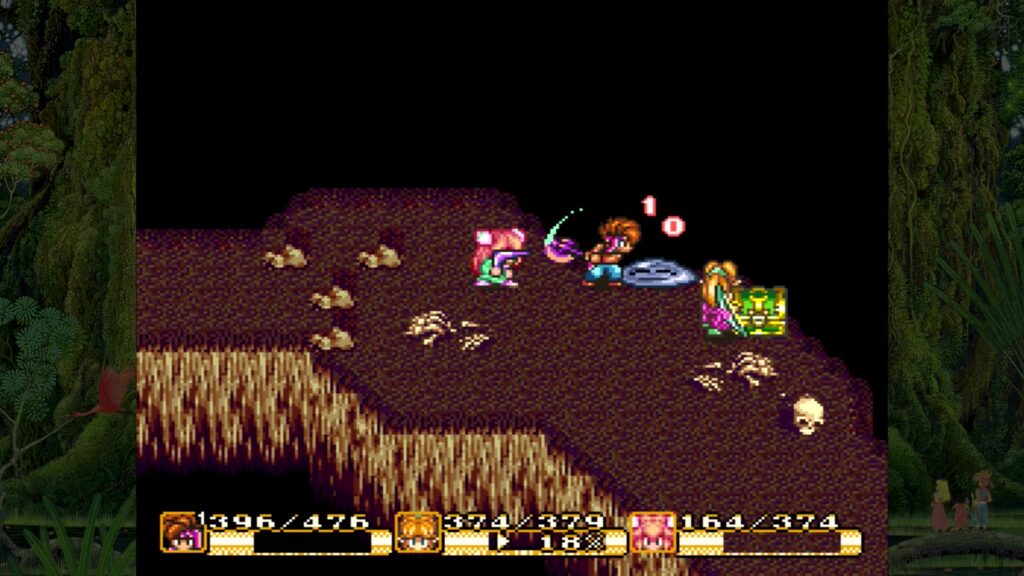
The other side of this equation, of course, is that the gameplay is extremely solid. But I’ve noticed something interesting, having looked back across a variety of commentary about the game from over the years: seemingly no-one knows how to talk about this game’s mechanics properly.
In my piece about my first impressions on Secret of Mana, I commented on the fact that the overall structure and pacing of Secret of Mana’s combat reminded me very much of more recent titles such as Final Fantasy XII and XV — particularly the former. Having now beaten the whole game, I completely stand by that assessment.
Secret of Mana is 2D Final Fantasy XII in which you have to manually press the “attack” button. Or, more accurately, it’s the other way around; Final Fantasy XII is 3D Secret of Mana in which basic attacks are performed automatically. This goes for game structure as well as core mechanics, too; both Secret of Mana and Final Fantasy XII are noteworthy in how they feature a mostly interconnected world that you travel through at “normal” scale, rather than making use of a “world map” approach seen in other RPGs.
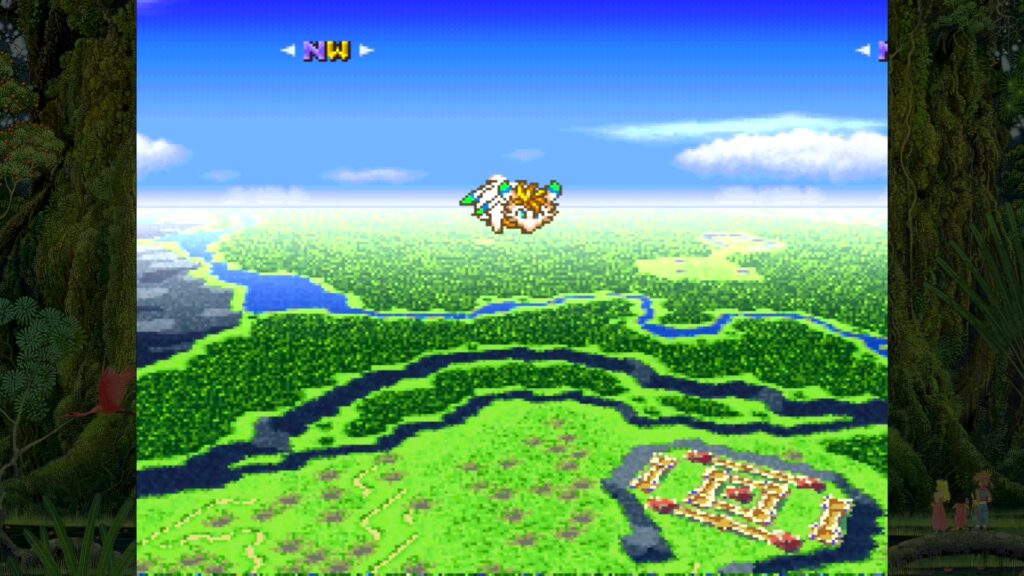
Of course, both of those games also feature a means of getting around more quickly. In Secret of Mana’s case, you’re initially able to quickly travel between locations — including those which aren’t connected directly — by using the Cannon Travel system, and later on you’re given access to Flammie the dragon, who can fly around a more traditionally recognisable SNES-era Mode 7 world map. But at heart, Secret of Mana is a game about picking your way through a quasi-open world.
To return to the combat for a moment, there are a number of common misconceptions about it. The first is that it’s “like Zelda, only you have to wait a bit between each strike”. This is not correct, because Zelda’s combat — at least in its 2D incarnations — works on a traditional collision detection model, whereby Link’s sword has to actually intersect with an enemy in order for it to register damage.
There’s no delay between hits, either, aside from that inherent to the attack animation and any invincibility frames the victim is provided with. If you can repeatedly hit an enemy with Link’s sword, you’ll repeatedly deal damage. Final Fantasy Adventure’s combat also works like this. But Secret of Mana’s does not.
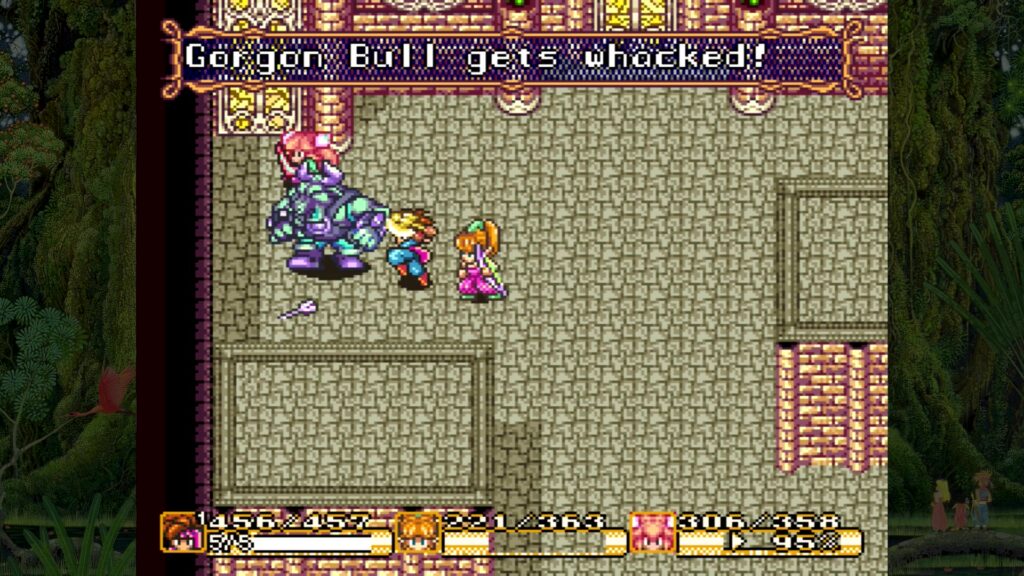
There’s a core difference, you see, and that’s the fact that unlike Zelda, Secret of Mana is calculating things in the same way as a turn-based RPG — it’s just dressing it up with the look and feel of a real-time action RPG. You can clearly see it with how long it seemingly takes to register damage sometimes; because the game is, under the hood, working out individual “turns” one at a time, it’s impossible for multiple characters to all “hit” an enemy simultaneously, even if their animations seem to suggest that they did.
As such, what you tend to end up getting is enemies taking multiple “hits” one after another — or, more commonly, the first hit knocking the enemy into a stunned or knocked-down state where they cannot be hit again for a moment. Add to this the fact that both heroes and enemies have hit rate and evasion rate statistics, and it becomes easier to see why just making your sword animation overlap an enemy sometimes isn’t enough to actually deal damage in Secret of Mana. This is, at heart, an RPG, not an action game.
The other take that I’ve seen on the combat is that the “charge” system for attacks in Secret of Mana evolved into the “stamina” system we see in today’s modern, deliberately-paced action RPGs such as the Souls series. This is so wildly incorrect that it’s not even really worth dissecting. Suffice to say that Secret of Mana is not, in any way, a 2D Souls game.
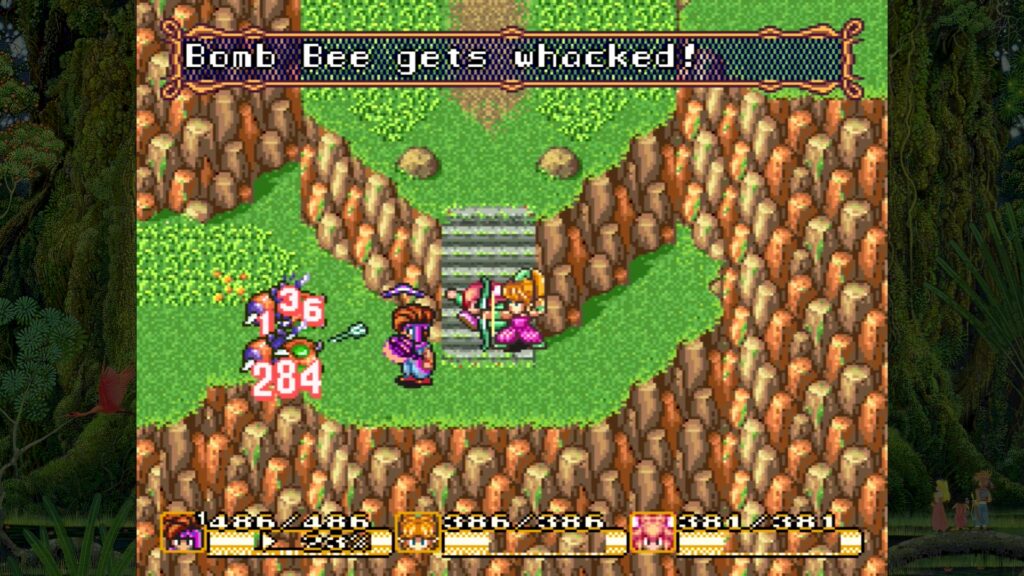
If you need further proof that Secret of Mana is, at heart, a relatively traditional RPG, you need look no further than the purpose of enemies scattered around the place. While enemies occasionally drop items, it’s relatively rare compared to your average Zelda — and the items they drop are either consumables or equipment rather than things which are immediately used to, say, restore health.
Instead, the enemies are positioned in a such a way that in order to traverse most environments, it’s desirable to fight your way through them — because doing so rewards you with the experience points and weapon skills you’ll need to remain at an appropriate power level to deal with the game’s challenges. While in Zelda games, enemies in the overworld are more obstacles than anything else, in Secret of Mana they’re a critical part of your overall progression. If you’re avoiding combat, you’re emphatically doing it wrong.
The fact that different enemies require different ways of dealing with is pure RPG, also. Sure, Zelda has a few enemies that require specific items to use in order to defeat them, but for the most part it’s about hitting them at the right time with your sword — perhaps blocking some of their attacks in the process.
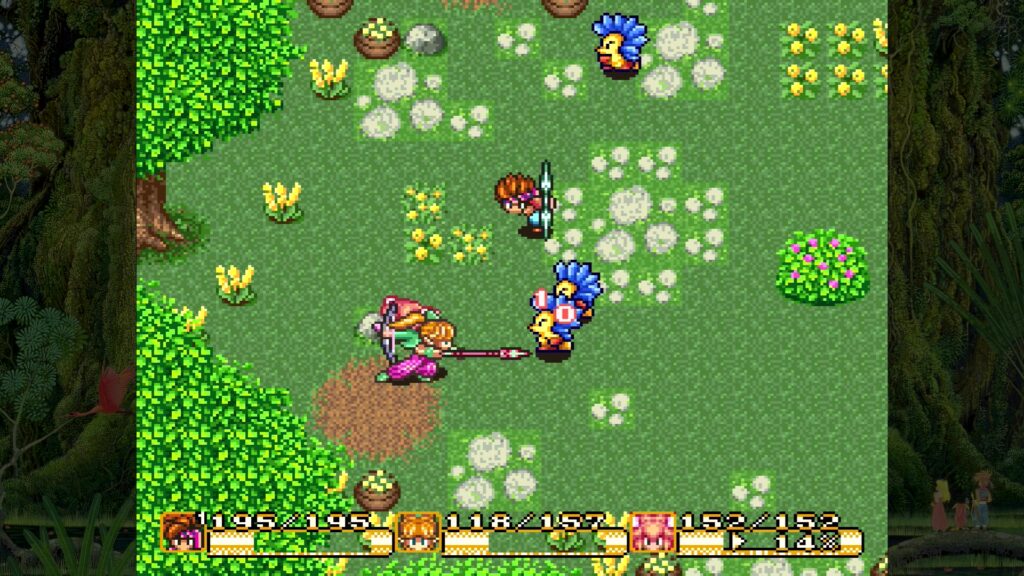
In Secret of Mana, meanwhile, you have enemies with high evade rates, strong physical defence, elemental affinities and all manner of other considerations — along with the fact that if any enemy uses magic on you, it will always hit. (Thankfully, the same is true in reverse; cast a spell on an enemy, and it will always hit them, too; this large advantage is counterbalanced by the relatively limited MP pool your two casters have.)
And there are different ways you can deal with situations like this: switch weapons, try magic, use different characters or make use of charge attacks. There are plenty of choices beyond “just try hitting it”.
This, really, is where Secret of Mana shines. It’s an endearingly designed game with some fun characters and a gorgeous soundtrack, of course, but with the barebones nature of the English translation the focus is squarely on the gameplay. And that’s not actually a bad thing at all, because that gameplay, once you get used to it, is absolutely rock solid.
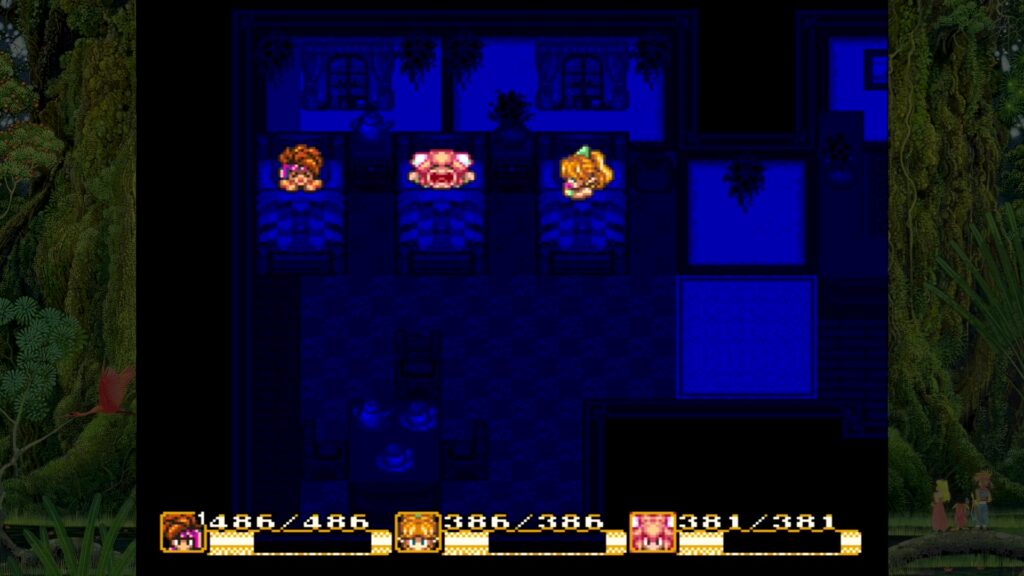
Sure, that learning process might take a little while if you are coming into this expecting “Squaresoft does Zelda” — but once you truly understand what makes Secret of Mana an RPG rather than an action adventure, there’s a consistently satisfying and enjoyable experience to be had. And it’s one I’m glad I finally made the time to explore to the fullest — even if I am a tad late to the party!
Join The Discussion
Rice Digital Discord
Rice Digital Twitter
Rice Digital Facebook
Or write us a letter for the Rice Digital Friday Letters Page by clicking here!
Disclosure: Some links in this article may be affiliate links, which means we may earn a small commission if you make a purchase after clicking on them. This is at no additional cost to you and helps support Rice Digital!
- Letter from the Editor: passing the torch - June 30, 2023
- Super Woden GP 2 is looking promising - June 30, 2023
- Inti Creates is making a 32 bit-style Love Live action platformer - June 26, 2023




